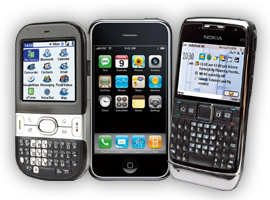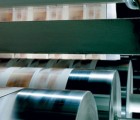
“The price of real estate in Brisbane is always about to take off; coffee, red wine, chocolates or tea – depending on which commodity is making the announcement – are good for your health; shareholders who stand up for themselves at annual general meetings are ‘agitators’ or ‘disgruntled’ or ‘dissident shareholders’. ‘We’ll all soon be shopping by computer’ has been a good media standby over the years. I wrote my first version of this in 1979. ‘The paperless office’ is a good one that has never happened.”
-Hugh Lunn, Working for Rupert
Being Gen Y, I’ve grown up with the internet, and an accompanying assumption that it’s going to take over everything, including print.
This attitude isn’t uniquely Gen Y, of course. With any technological development in history there’s always an assumption that it must be an improvement on whatever preceded it. We call it “progress”. Thus, the question wouldn’t appear to be “Will the internet and digital technologies supersede print?”, but rather, “When?”
A character on television series The West Wing once quipped that science had failed him because he was “meant to have a jetpack by now”. Although it was intended as little more than a moment of levity to quell the drama somewhat, it is founded on a great truth: that we can never accurately assess the speed at which change is coming towards us, much less what that change will be.
The same could be said of print’s demise. To put it bluntly: when it comes to print, I don’t know how many years are left on the clock, I only know it’s counting down.
Fellow ProPrint columnist Frank Romano last year presented “20 reasons why print will prevail”, which is a bold position even for an industry champion. In their heart of hearts, even the staunchest advocates of print must realise that it is up against a technological juggernaut that can deliver information instantaneously and more cheaply than print. We are in the Information Age, and whatever medium can deliver it in the most cost and time efficient manner is going to prevail.
I’m not a futurist, so I don’t know exactly what specific technology is going to eventually consign print to the realm of nostalgic antiquities, so for convenience let’s call it the “iPrint”. We can see its genesis already in the emergence of e-book readers and smartphones with their internet browsers. How long before someone is able to efficiently link one with the other, and deliver a mobile, alterable, multi-platform information delivery device? How long before it is made smaller, cheaper, faster and more widely available? When will the iPrint be upon us?
When he was making the blockbuster movie Minority Report, director Steven Spielberg reportedly consulted a group of sixteen “future experts”, including an MIT professor of media studies, the inventor of virtual reality, and the founder of Wired magazine, in order to help him create a plausible depiction of the year 2054.
Unsurprisingly (considering that ProPrint didn’t score an invite to Steven’s round table), print doesn’t get a look-in in the film. Tellingly, one scene features a man reading a newspaper on the train which comprises content which is being constantly updated, with a breaking news story flashing onto the page before his very eyes to alert him of Tom Cruise’s flight from the law. This newspaper might well be the iPrint I’m forecasting.
However, for now, people and businesses still need print, whether they realise it or not. The iPrint will need decades to be perfected, made cheaper so that the wider public can afford it, and proliferated such that modern life is built around it and its adoption becomes unavoidable.
Moreover, there are still plenty of economies further back on the road of development that will need print before they evolve into the digital age. The BRIC economies have only just begun to gorge themselves on technologies and resources that the Western world has come to regard as basic necessities and already become bored with, and there’s every reason to believe that printing technologies will form part of their suddenly aroused appetite.
A far more sensible debate in the short term, then, would be not “when will digital technology supersede print” but “what will it do to it?”
Even from an alarmist perspective, it’s hard to see print very suddenly becoming extinct; what’s far more likely is that it will be marginalised and settle into niche markets. Video may not have killed the radio star, but it did change its place in the world. Radio plays and live concert broadcasts may have gone the way of the Tasmanian tiger, but it’s still hard to see an up-and-coming pop group getting anywhere without FM airplay, or a political leader getting ahead without embracing the world of talkback. Radio was forced to alter its focus with the rise of television, but as a result it kept a place in the modern world.
So what will the internet and digital technologies do to print? I’ll let you know as soon as Spielberg starts returning my calls.
Daniel Fitzgerald is a journalist for ProPrint.
If you think this attitude is alarmist, check out this clip from The Daily Show on the New York Times. Worth a laugh.
Comment below to have your say on this story.
If you have a news story or tip-off, get in touch at editorial@sprinter.com.au.
Sign up to the Sprinter newsletter



